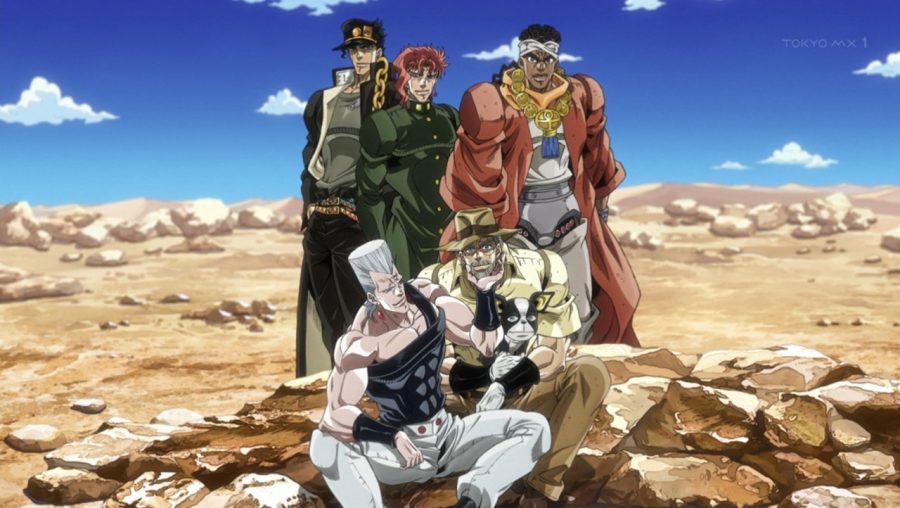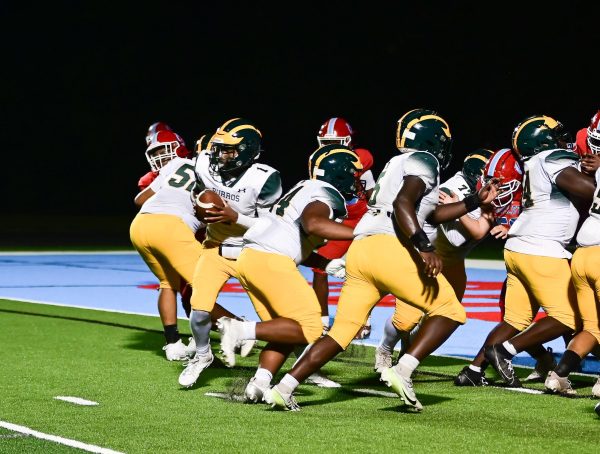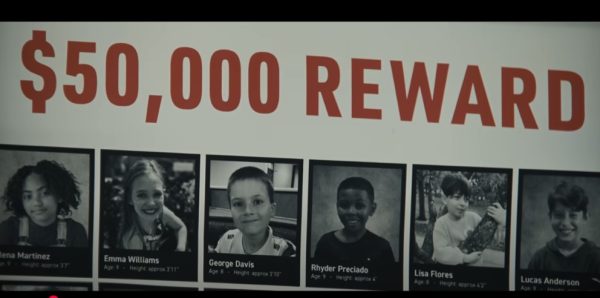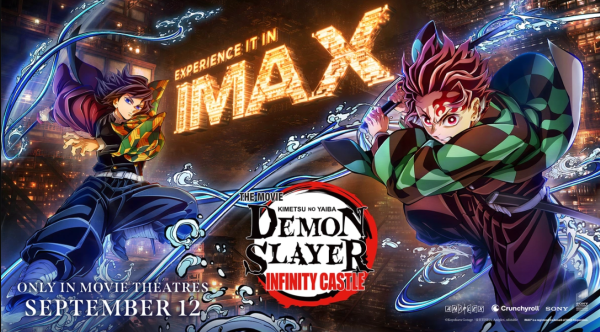Jojo’s Bizarre Adventure: Stardust Crusaders – A show with great public STAND-ing
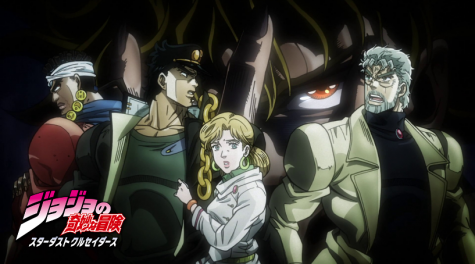
Jojo’s Bizarre Adventure Part 3: Stardust Crusaders is a well made piece of animated media. It is an anime adaptation of the manga created by Hirohiko Araki, produced by David Productions, released on July 30th, 2014. It spanned for 2 seasons, reaching a total of 48 episodes.
The story revolves around one Jotaro Kujo, a Japanese high school student with an otherworldly power known as a “Stand”, a sort of spiritual being linked to an individual, with powers far beyond that of a human.
After a visit from his grandfather, Joseph Joestar, he is informed of an evil being known as DIO, a vampire who battled with his ancestor, Jonathan Joestar, stealing his body to enact revenge on the Joestar bloodline. Shortly thereafter, Jotaro’s mother comes down with a deadly illness, caused by the appearance of a Stand within her, and the only way to cure this illness is to end the life of DIO. Jotaro, Joseph, and their companions Mohammed Avdol, Noriaki Kakyoin, and Jean Pierre Polnareff set out to Egypt, in search of DIO.
The show follows a “Monster of the Week” format, with every episode presenting a new enemy Stand user, sent to exterminate them by DIO. Every enemy Stand user has a different power with which to hinder our group, and each of them are interesting in their own right (excluding “The Sun”). Unfortunately, whilst the Stands are all different, the formula stays generally the same, following the formula of: Introduce new Stand user, place the group in a bind, defeat the new Stand user and move on. This continues into the second season as well, but not for the entire season.
Thankfully, even though the formula stays the same, the characters themselves do not. As the story continues, the situations that our heroes get put in have an effect on them, causing their characters to develop and mature, especially in the case of Polnareff. All of the heroes receive some form of development, although some receive more than others. Unfortunately, this only really applies to our heroes, as the villains encountered are, for the most part, one-offs, defeated in one or two episodes.
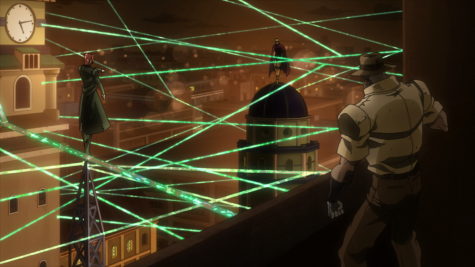
Despite these shortcomings, the show manages to present enough fresh and interesting Stands and Scenarios to keep the viewer engaged through it’s runtime. Throughout my time watching, at no point did I become unengaged from the story and action.
Even if the formula doesn’t change, the show manages to avoid dragging itself along, by not spending too much time on any scenarios that don’t warrant more screen time. The show presents you with a concept, shows an acceptable amount of the concept, and then moves along to a new one before it can be overused.
To conclude, while the show wasn’t perfect, it was satisfying. I wholeheartedly enjoyed each episode, and felt connected to the characters, as if I could truly feel their plight. I audibly cheered them on during their final battle, and shouted out in disbelief whenever they would enter an unfavorable situation, and when it was all over, I felt happy for the heroes, happy that they had finally won. If I’ve managed to pique your interest, then you can watch the series over on Crunchyroll. I would gladly watch it all again, and I highly recommend you watch it as well, you won’t regret it.

